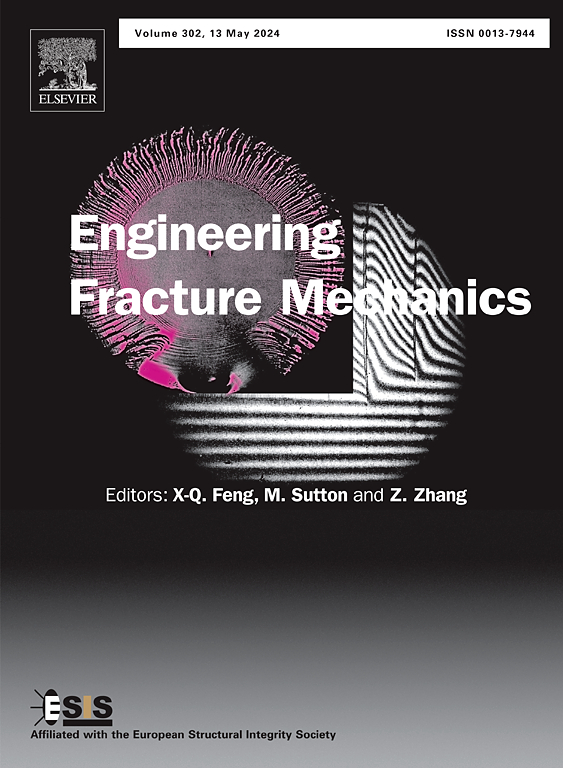New insights into interface characterization of ceramic matrix composites: Theory and application of hysteresis loops with Coulomb friction
IF 4.7
2区 工程技术
Q1 MECHANICS
引用次数: 0
Abstract
To better predict the stress–strain relationship during unloading/reloading cycles in unidirectional fiber-reinforced ceramic matrix composites (FRCMCs), a comprehensive micromechanical hysteresis loop model is proposed, considering Coulomb friction and incorporating effects of interphase thickness, Poisson effect, residual thermal stress (RTS), and interfacial roughness. Based on the model, the hysteresis behavior is categorized into three distinct domains, i.e., small debonding energy (SDE), large debonding energy (LDE), and overlarge debonding energy (OLDE). For FRCMCs with low debonding toughness and thin interphase, the SDE scenario is more prevalent. By applying the model to interface characterization, we propose a more scientific set of parameters for interfacial performance description, including frictional coefficient, initial interfacial radial pressure, debonding toughness, and axial RTS. Furthermore, a method for obtaining the interfacial parameters based on tensile hysteresis tests is established, taking into account all the three domains. Especially, an innovative two-stage fitting approach is designed to derive interfacial properties for the SDE case, addressing the gaps in prior research. The comparison of the current model with experimental data for Cf/PyC/SiC and Nicalon/CAS composites demonstrates the reliability in hysteresis testing analysis.

求助全文
约1分钟内获得全文
求助全文
来源期刊
CiteScore
8.70
自引率
13.00%
发文量
606
审稿时长
74 days
期刊介绍:
EFM covers a broad range of topics in fracture mechanics to be of interest and use to both researchers and practitioners. Contributions are welcome which address the fracture behavior of conventional engineering material systems as well as newly emerging material systems. Contributions on developments in the areas of mechanics and materials science strongly related to fracture mechanics are also welcome. Papers on fatigue are welcome if they treat the fatigue process using the methods of fracture mechanics.

 求助内容:
求助内容: 应助结果提醒方式:
应助结果提醒方式:


